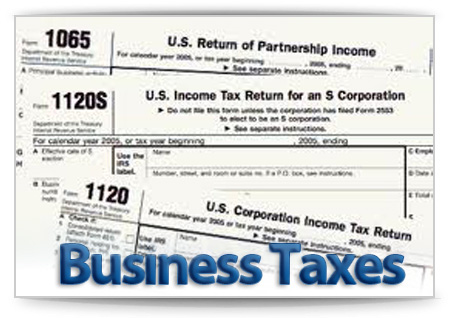Taxes
How the Inflation Reduction Act Impacts Corporate AMT and Bonus Depreciation
The Inflation Reduction Act reintroduces the corporate AMT, but with major changes, and it only applies to certain corporations, but a company only needs to pass the book income test once to be subject to AMT.
Mar. 08, 2023

By Ryan Sheehan.
In August 2022, the landmark Inflation Reduction Act (IRA) was signed into law. The IRA will raise $738 billion and authorize $391 billion in spending to combat climate change through clean energy. The plan also calls for $238 billion in deficit reduction, three years of Affordable Care Act subsidies and prescription drug reform to lower prices. Representing the largest investment to address climate change, it also includes substantial funds to expand and modernize the Internal Revenue Service (IRS).
While designed to limit inflation, the IRA has also impacted various areas of taxation beyond IRS funding, such as bonus depreciation and the corporate alternative minimum tax (AMT). Understanding these impacts is critical in helping both in-house tax teams, and tax firm professionals who devise effective strategies for capital investment and equipment purchases.
Corporate Alternative Minimum Tax is Back
Congress originally introduced the corporate AMT in 1986 to prevent large companies from using tax exemptions to avoid paying income taxes, despite high earnings. The original version of the corporate AMT required companies to calculate their tax liability twice: once using the regular tax code and once using an alternative calculation without certain deductions. Then, the company paid whichever resulted in the highest tax bill. Corporate AMT was eventually repealed by the Tax Cuts and Jobs Act of 2017. However, with the signing of the IRA, corporate AMT was reintroduced, but with major changes:
- It only applies to certain corporations (or a group of corporations treated as a single employer) with significant book-to-tax differences and a three-year average annual income over $1 billion from the prior three tax years.
- A company only needs to pass the book income test once to be subject to AMT. Unless the IRS specifies otherwise, it remains an applicable corporation.
- The new corporate AMT applies a 15 percent tax to a company’s adjusted financial statement income (AFSI). AFSI is a company’s net income or loss reported on its applicable financial statements (AFS), such as a Form 10-K filed with the SEC, including tax and accounting adjustments. Accelerated depreciation is a tax adjustment (but not for book purposes).
- This aspect of the corporate AMT could substantially cut the minimum tax bill of corporations that invest heavily in the next few years. However, it will have less impact as bonus depreciation phases out unless Congress decides to extend it.
- The IRA either created or reinstated green energy tax credits. Combined with the AMT, these credits will affect corporations’ decisions about bonus depreciation.
Indirect Impacts of IRA on Accelerated and Bonus Depreciation
Accelerated depreciation allows businesses to write off most property costs – vehicles, equipment, etc. – faster than under modified accelerated cost recovery (MACRS). The idea is that businesses can recoup part of these costs more quickly, allowing them to make capital investments that boost the economy while freeing up cash flow for other requirements. The tax code has different methods of accelerated depreciation. One popular method is bonus depreciation. Bonus depreciation lets businesses write off a portion of an asset’s cost in its first year of use. Companies can currently write off 100% of qualified equipment costs in the year the equipment is placed in service. This percentage is scheduled to drop to 80% in 2023, 60% in 2024, 40% in 2025, until the write-off is wholly phased out in 2027.
It is important to note that the IRA did not directly impact bonus depreciation. However, because of the extensive changes to corporate AMT, a company’s overall depreciation strategy must now be reexamined.
To Bonus or Not to Bonus Depreciate
Depreciation can factor into both regular and AMT tax calculations for corporations. As an example, consider a company that wants to claim the renewable electricity production tax credit (PTC) before it expires at the end of 2024. To qualify for the PTC, a company must have a tax liability and cannot have a loss. In this scenario, the company may opt to forgo bonus depreciation to increase taxable income, and use the expiring credit. However, because calculations for the corporate AMT allow the company to use accelerated depreciation when determining AFSI, claiming that tax credit for regular tax purposes could result in a higher tax bill under AMT calculations. This creates several moving pieces and requires multiple calculations for the best course of action.
Simplifying the Process with Fixed Asset Modeling
To address the additional layer of calculations introduced by the IRA, tax professionals are best served by performing ‘What-If’ scenarios with their depreciation expense. To do this, they must be able to create a copy of their fixed asset book-of-record that can be used as a data set for modeling. This allows them to determine which mix of elections will serve them best before actually applying updates to the aforementioned book of record. Whether a company models these various scenarios using its own proprietary systems or opts to use fixed-assets software, multiple calculations that account for the revived corporate AMT and bonus depreciation must be done. Without this critical information, it is impossible to devise an accurate capital investment and equipment purchase strategy in line with a company’s overall financial goals.
====
Ryan Sheehan is a Senior Product Lead for Bloomberg Tax & Accounting. He is responsible for Bloomberg Tax & Accounting’s corporate tax products, including Fixed Assets. Prior to Bloomberg Tax & Accounting, Ryan was a CPA at KPMG’s Washington D.C. Metro office in the Business Tax Services practice.
